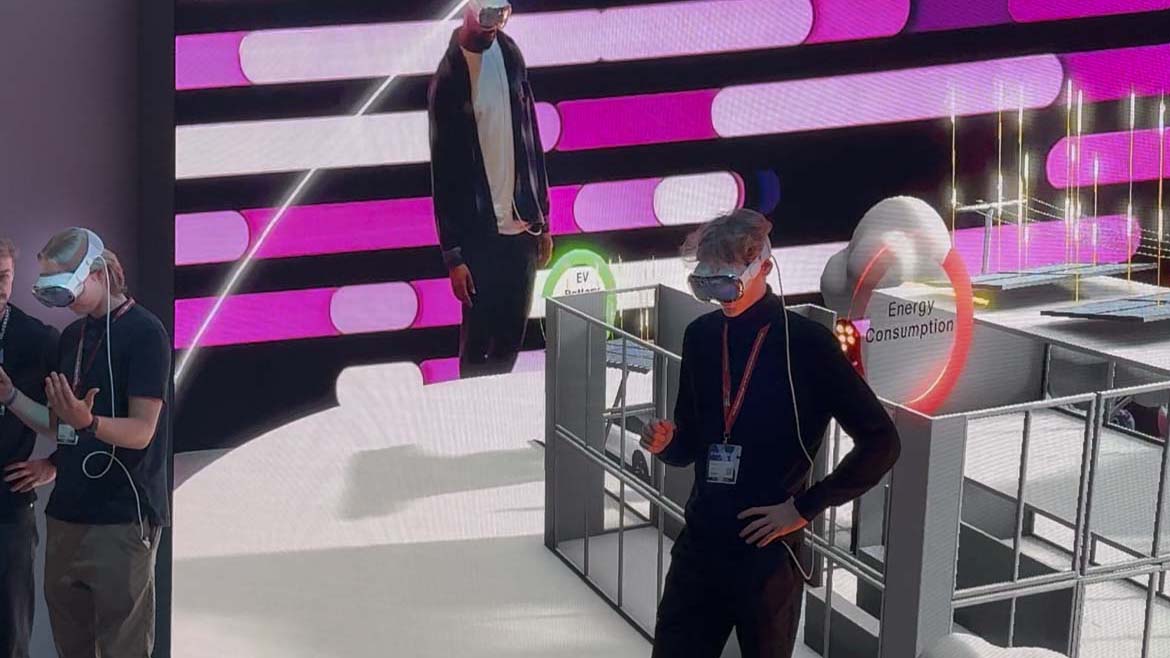Photo: Ulrich Buckenlei, Volkswagen Group / IAA Mobility 2025
Photo: Ulrich Buckenlei
Why Mixed Reality is Changing Automotive Storytelling
MR stagings combine real exhibits with digital layers, creating context-rich experiences. Instead of abstract specifications, functions, safety concepts and service workflows are spatially visualized. Brand communication gains depth, purchasing decisions gain certainty, and product teams receive immediate feedback from real usage scenarios.
- Complex technology becomes understandable through spatial visualization and interaction
- Higher visitor engagement through walk-in, guided narrative structures
- Faster knowledge transfer for sales, service, and training

Mixed Reality as a stage: products, services and data are integrated into a spatial narrative.
The combination of a physical vehicle and a digital layer makes technical advantages situationally tangible and lowers the barrier to understanding and evaluating new functions.
Mercedes-Benz: From Driver Assistance to Tangible System Intelligence
At Mercedes-Benz, the focus is on translating assistance and automation functions into everyday experiences. MR modules show in real time how sensors, maps, edge AI and cloud services interact and prepare decisions. Visitors not only see what the vehicle detects, but also how reliable the assessment is and how the planner derives driving maneuvers from it.
- Visualization of perception, decision, and system confidence as the core of safety
- Explainable AI: functions are linked to causes and effects
- End-to-end thinking from data collection through simulation to field updates
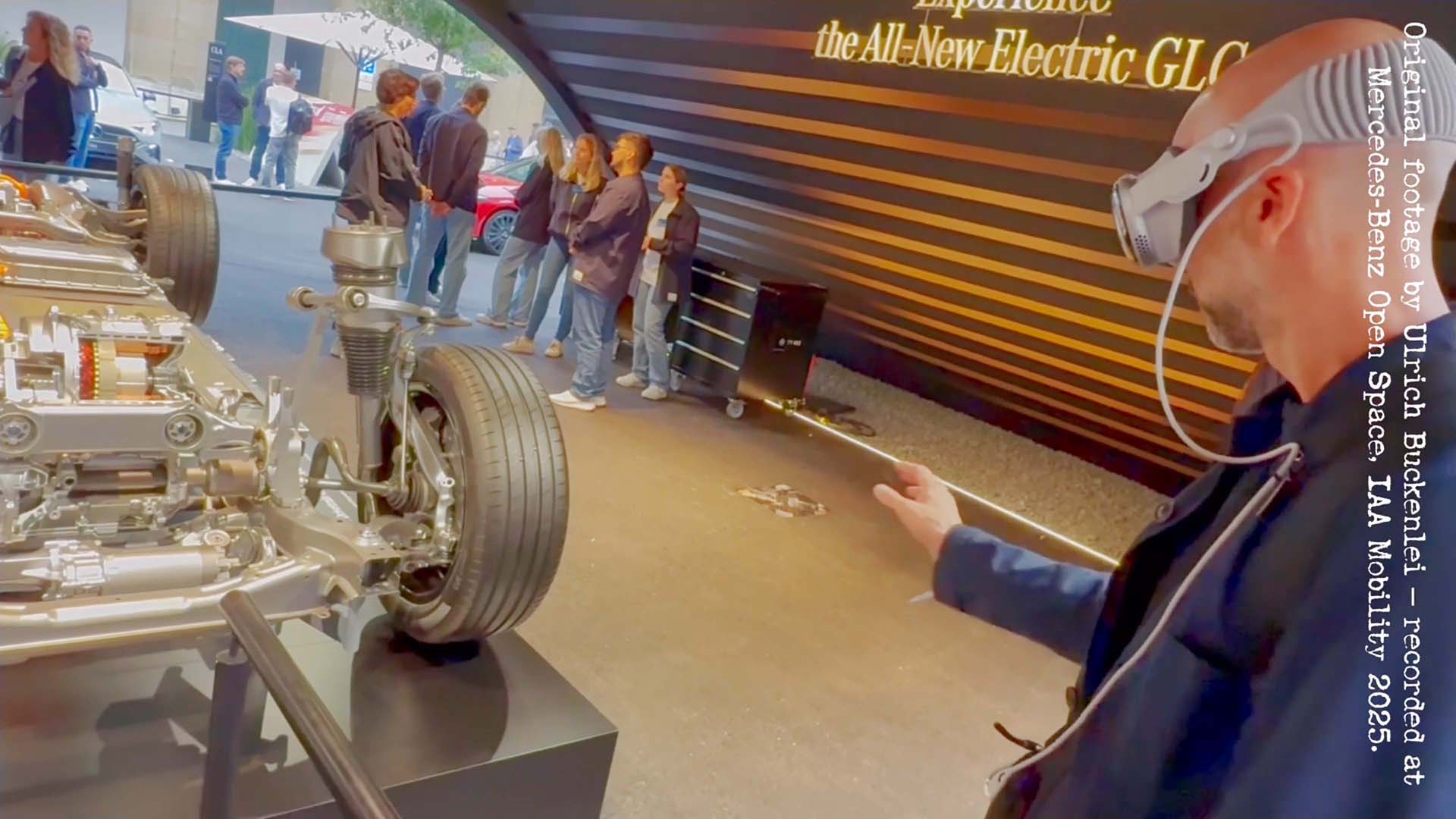
MR visualization of vehicle intelligence: sensor fusion, risk assessment and decision paths become clear.
This makes it easier to understand why vehicles act defensively in certain situations, hand over driving, or choose alternative routes.
Volkswagen: Energy, Services and Connected Ecosystems
Volkswagen uses MR to holistically present energy flows, charging, bidirectional scenarios and digital services. Visitors follow how the vehicle, home energy system and public infrastructure interact and what tariffs, comfort functions and sustainability effects result from this.
- Transparent energy and cost models in interactive MR dashboards
- Bidirectional charging in the spatial context of home, office, and city
- Service journeys from workshop appointments to over-the-air updates
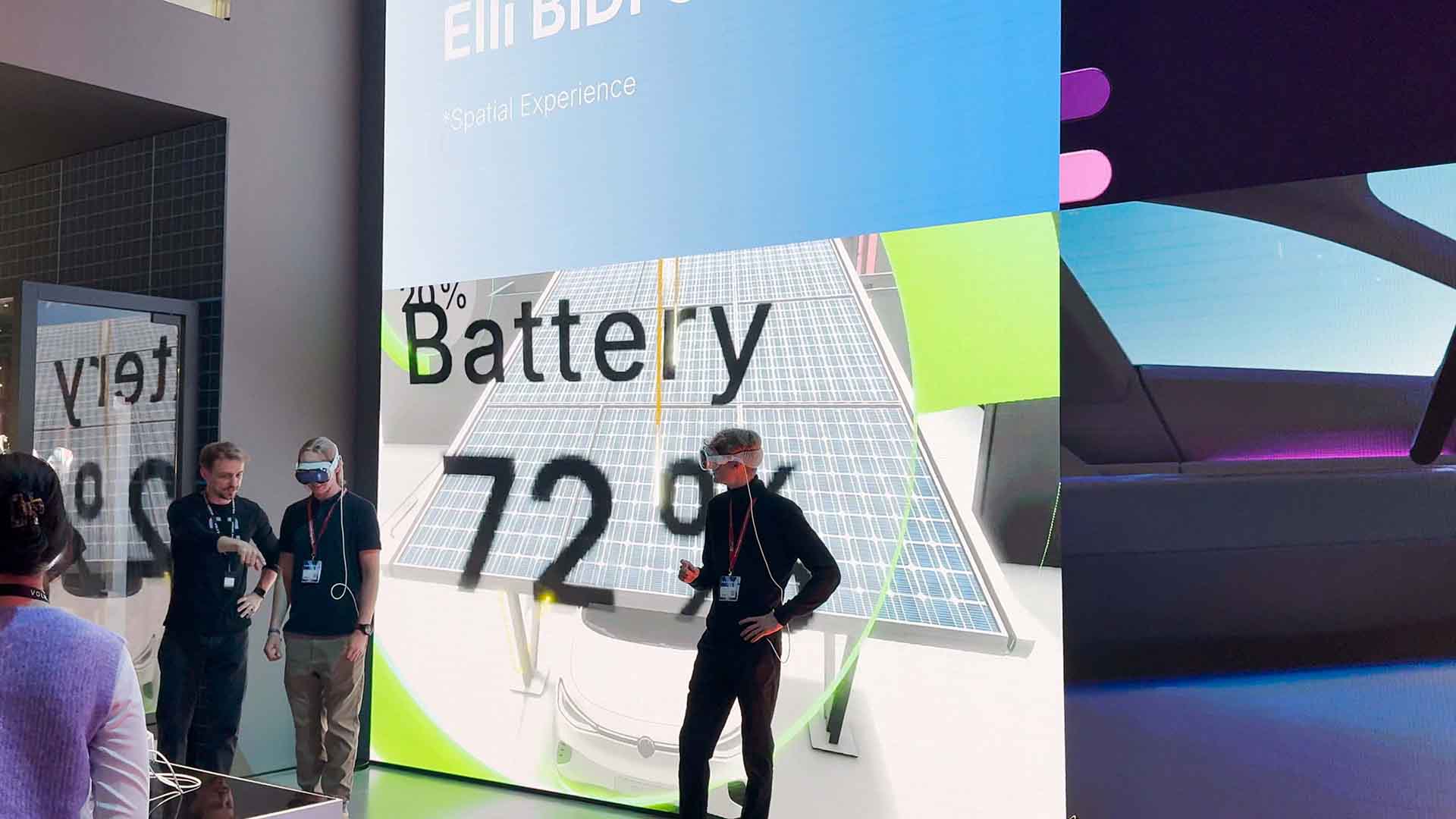
Connected mobility made understandable: MR shows the relationships between vehicle, energy and service.
The added value arises from linking technical data with concrete everyday situations and decision options.
Simulation and Digital Twins as the Foundation of Experiences
Most MR experiences are powered by simulation data and digital twins. Development stages are mirrored on site into the MR staging, allowing product teams to test assumptions, validate variants, and iteratively improve content. This shortens coordination, increases quality, and reduces costs for physical prototypes.
- Rapid prototyping of functions and journeys directly at the MR exhibit
- Validation of edge cases in a safe, reproducible environment
- Seamless data chains from engineering to live experience
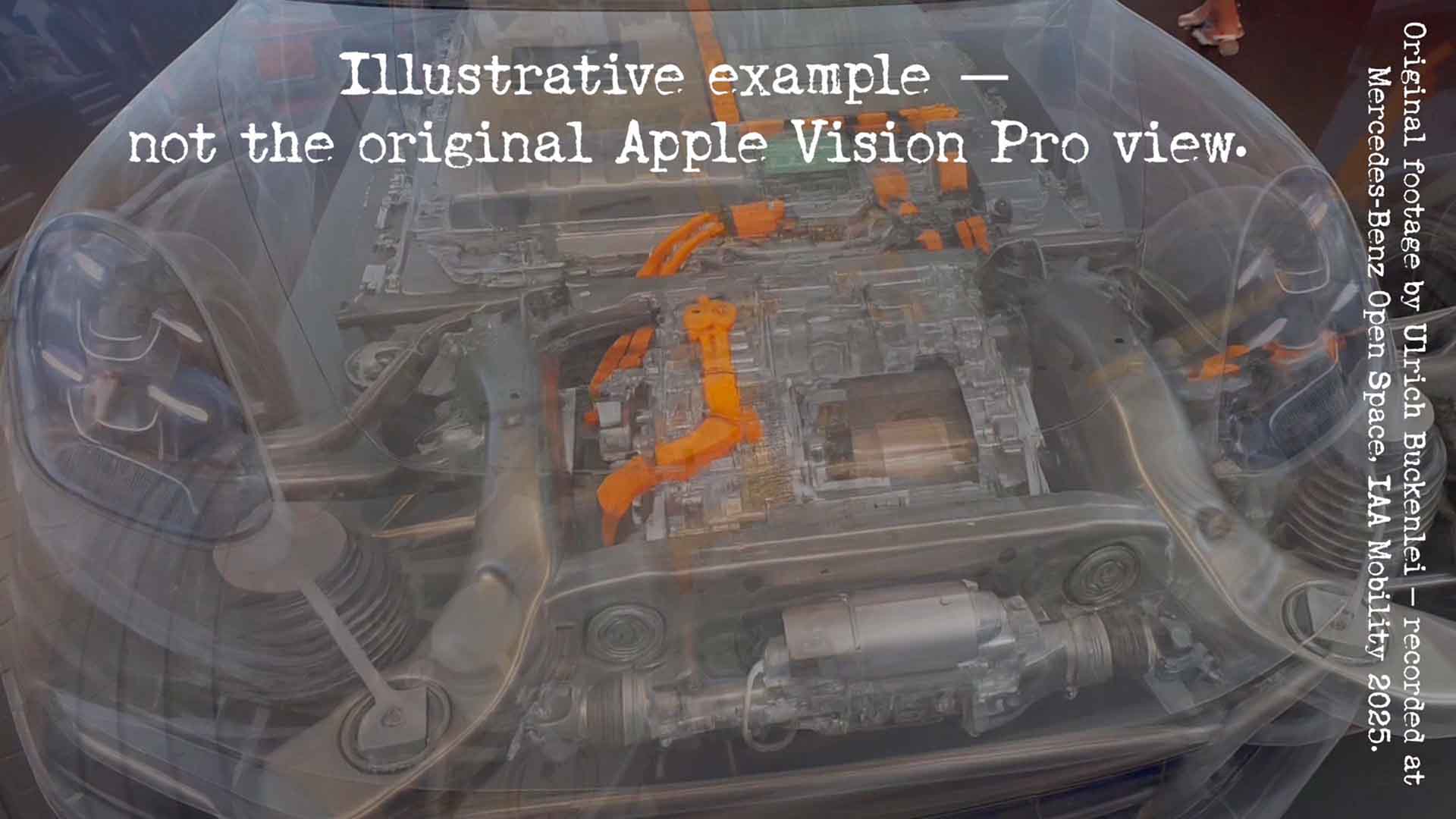
Digital Twin meets Mixed Reality: content from simulations flows directly into the visitor experience.
MR thus becomes a window into development and a tool for continuous improvement.
Video: Volkswagen Group Mixed-Reality Storytelling at IAA Mobility 2025
The video shows key MR stations from Mercedes-Benz and Volkswagen, explains the ideas behind the experiences and places the technologies in an industrial context.
Video insight into MR stations and production pipelines.
Source: VISORIC Media
Video: Mercedes-Benz Mixed-Reality Storytelling at IAA Mobility Open Space 2025
The video shows key MR stations from Mercedes-Benz and Volkswagen, explains the ideas behind the experiences and places the technologies in an industrial context.
Video insight into MR stations and production pipelines.
Source: VISORIC Media
Working with the VISORIC Expert Team
VISORIC supports manufacturers and suppliers in implementing MR storytelling from concept to roll-out. The approach combines engineering, content, and system integration to create brand- and process-secure experiences.
- Consulting, conception, prototyping, and operation of MR experiences
- Integration of simulation and digital twin data into MR pipelines
- Enablement for sales, service, training, and factory acceptance
Get in touch with the Munich VISORIC expert team. Together we develop MR experiences that make technology understandable, accelerate decision-making, and create measurable business value.
About the Author and the Munich Expert Team of VISORIC GmbH
The perspectives presented in this analysis are based on the direct observations and analytical expertise of Ulrich Buckenlei, accredited media representative and industry analyst at IAA Mobility 2025. His role is to connect technological signals with broader social and economic trends and make them accessible to expert audiences from academia, business, and politics.
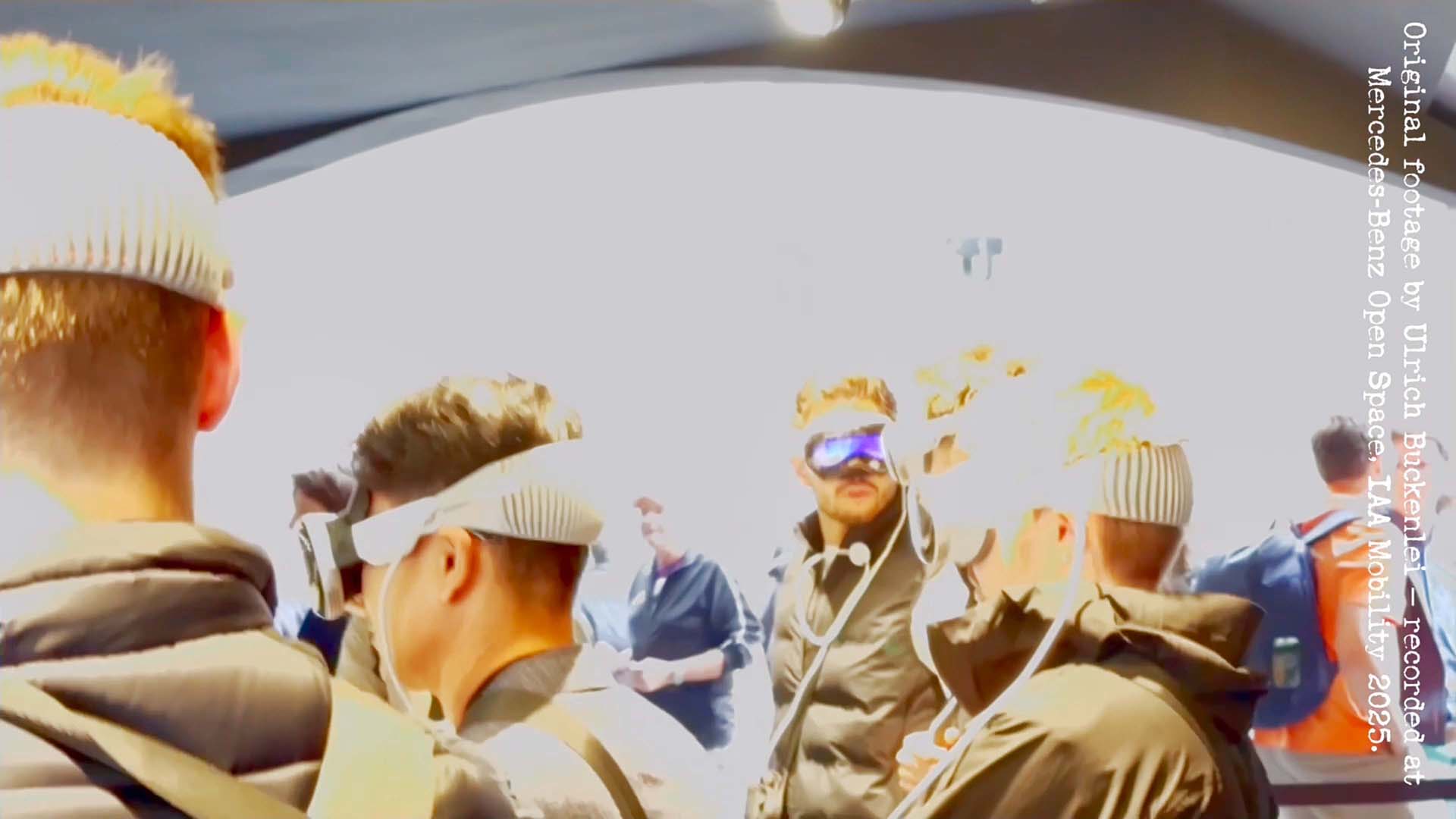
Digital Twin meets Mixed Reality: content from simulations flows directly into the visitor experience.
MR thus becomes a window into development and a tool for continuous improvement.
For more than fifteen years, Buckenlei has worked at the interface of research, applied technology, and communication. His focus ranges from artificial intelligence and robotics to immersive 3D XR environments and mobility technologies. His analytical approach is based on combining scientific methods, comprehensive industry knowledge, and direct reporting from international technology events such as IAA Mobility.
This work is supported by the Munich expert team of VISORIC GmbH, which specializes in AI, robotics, XR, and forward-looking mobility solutions. The group combines programming and technical implementation with conceptual design and consulting. VISORIC GmbH’s expertise is based on interdisciplinary collaboration: engineers, designers, and analysts work together to develop insights and solutions for institutions and companies.
- Research-based analysis of trends in AI, robotics, XR, and mobility
- Conceptual design and prototyping of innovative applications
- Technical implementation through programming and system integration
- Strategic consulting for companies and institutions across industries
- More than fifteen years of experience linking research and practice
The guiding principle of the team is not advertising but orientation. Their goal is to provide a scientifically sound framework for decision-making in times of technological transformation. Whether AI-powered vehicles, robotic assistance systems, or immersive XR interfaces, the team helps put innovations into context and clarify their practical and social implications.
In this role, Ulrich Buckenlei and his Munich expert team at VISORIC GmbH see themselves as mediators between technological development and institutional implementation. Their goal is not to predict a single future, but to expand perspectives on what is possible. By combining critical analysis with applied expertise, they provide orientation in an environment where technological, economic, and cultural transformations are closely intertwined.
Contact Persons:
Ulrich Buckenlei (Creative Director)
Mobile: +49 152 53532871
Email: ulrich.buckenlei@visoric.com
Nataliya Daniltseva (Project Manager)
Mobile: +49 176 72805705
Email: nataliya.daniltseva@visoric.com
Address:
VISORIC GmbH
Bayerstraße 13
D-80335 Munich


